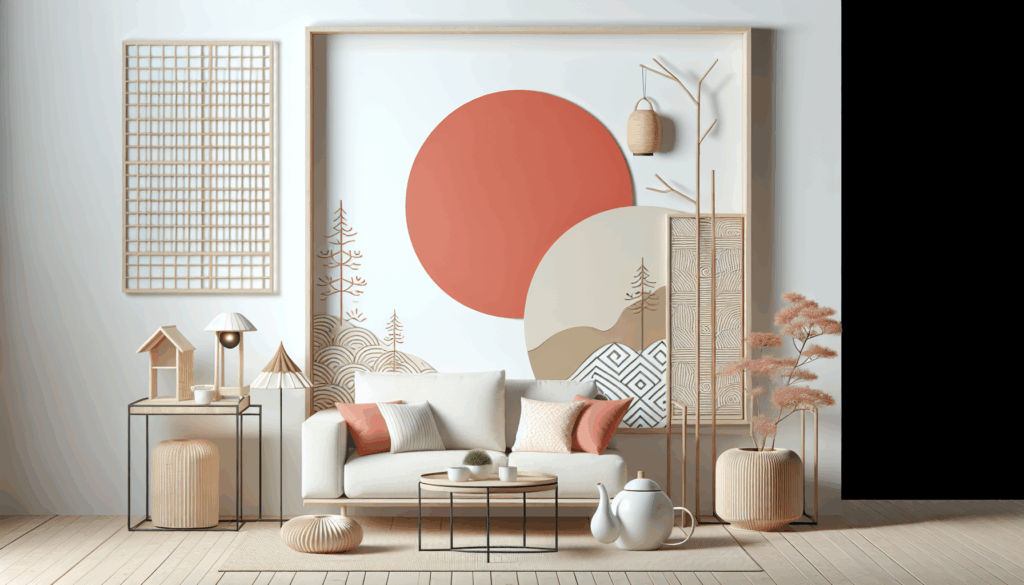In recent years, the world of interior design has witnessed a fascinating evolution, with various styles emerging and intertwining to create innovative aesthetics. Among these, Japandi has emerged as a prominent trend, capturing the hearts of design enthusiasts and homeowners alike. This unique design style marries the minimalist elegance of Japanese design with the warm, cozy elements of Scandinavian aesthetics, resulting in spaces that are both functional and inviting. In this blog, we will explore the essence of Japandi, its key characteristics, and how to incorporate this beautiful style into your home.

Understanding Japandi
Japandi is a hybrid design style that seamlessly blends the principles of Japanese and Scandinavian design. The name itself is a portmanteau of “Japan” and “Scandi.” While both styles emphasize simplicity and functionality, they also express a deep appreciation for craftsmanship, materials, and nature. Japandi celebrates the beauty of minimalism while introducing cozy elements that create a warm and inviting atmosphere.
Key Characteristics of Japandi Design
1. Minimalism: At its core, Japandi embodies the minimalist philosophy, which prioritizes simplicity and the elimination of clutter. This design style encourages homeowners to curate their spaces thoughtfully, showcasing only the essentials and meaningful items that bring joy.
2. Natural Materials: Japandi places a strong emphasis on the use of natural materials such as wood, stone, and linen. These materials not only contribute to a serene aesthetic but also promote sustainability and a connection to nature. Light woods like pine and bamboo are often favored for their warmth and organic feel.
3. Neutral Color Palette: The color palette in Japandi design is typically muted and earthy. Soft neutrals, such as whites, beiges, and grays, serve as a backdrop, while deeper tones of green, navy, or terracotta may be introduced to add depth and warmth to the space. This harmonious palette creates a calming environment conducive to relaxation.
4. Functional Furniture: Japandi furniture is characterized by its simplicity and functionality. Pieces are often low-profile, with clean lines and a focus on usability. Furniture items are designed to serve multiple purposes, reflecting the Scandinavian ethos of practicality and efficiency.
5. Cozy Textures: While minimalism is a defining feature, Japandi also embraces the cozy and inviting aspects of Scandinavian design. This is achieved through the use of various textures, such as soft textiles, plush rugs, and warm throws. Incorporating these elements helps to create a sense of comfort and warmth within the minimalist framework.
6. Connection to Nature: Both Japanese and Scandinavian cultures have a profound respect for nature, and Japandi design reflects this connection. Large windows that frame views of the outdoors, indoor plants, and natural light are integral components that enhance the overall ambiance of a Japandi space.
How to Incorporate Japandi into Your Home
If you’re inspired by the Japandi aesthetic and want to infuse its principles into your living space, here are some tips to get you started:
1. Declutter and Simplify: Begin by decluttering your space. Remove items that no longer serve a purpose or bring you joy. Aim for a clean and open environment that allows the beauty of your essential pieces to shine.
2. Choose Natural Materials: Opt for furniture and decor made from natural materials. Look for wooden furniture with a light finish, stone accents, and textiles made from organic fibers. These choices will help create a warm and inviting atmosphere.
3. Stick to a Neutral Palette: Select a color palette that aligns with Japandi principles. Start with a foundation of soft neutrals and incorporate accents in deeper shades to add character without overwhelming the space.
4. Invest in Functional Furniture: Look for furniture that combines style with practicality. Choose multipurpose items, such as a coffee table that doubles as storage or a sofa that can be easily rearranged for different occasions.
5. Layer Textures: Introduce cozy textures into your space by using cushions, throws, and rugs. Layering different textiles will add warmth to your minimalist environment and create a welcoming ambiance.
6. Bring the Outdoors In: Incorporate indoor plants to enhance the natural feel of your home. Plants not only improve air quality but also add a touch of life and vibrancy to your space.
7. Focus on Lighting: Lighting plays a crucial role in Japandi design. Opt for warm, soft lighting options to create a cozy atmosphere. Consider using pendant lights or floor lamps with a minimalist design to complement the overall aesthetic.
8. Embrace Imperfection: One of the tenets of Japanese design is the idea of wabi-sabi, which celebrates the beauty of imperfection and transience. Incorporate handmade items or decor with unique textures and finishes to embrace this philosophy.
The Future of Japandi Design
As we move forward into an era that increasingly values sustainability and mindfulness, the Japandi style is likely to continue its rise. Its ability to create serene, functional spaces while promoting a deep connection to nature resonates with a growing desire for simplicity and tranquility in our fast-paced lives.
In conclusion, Japandi is more than just a design trend; it’s a lifestyle choice that encourages us to embrace minimalism while nurturing a sense of warmth and comfort in our homes. By thoughtfully curating our spaces, we can create welcoming environments that reflect our values and foster a sense of peace. Whether you’re redecorating a single room or your entire home, the principles of Japandi can guide you in creating a space that feels both serene and inviting. Embrace the rise of Japandi, and let your home become a sanctuary of calm and coziness.
AI-Assisted Content Disclaimer
This article was created with AI assistance and reviewed by a human for accuracy and clarity.






Leave a Reply